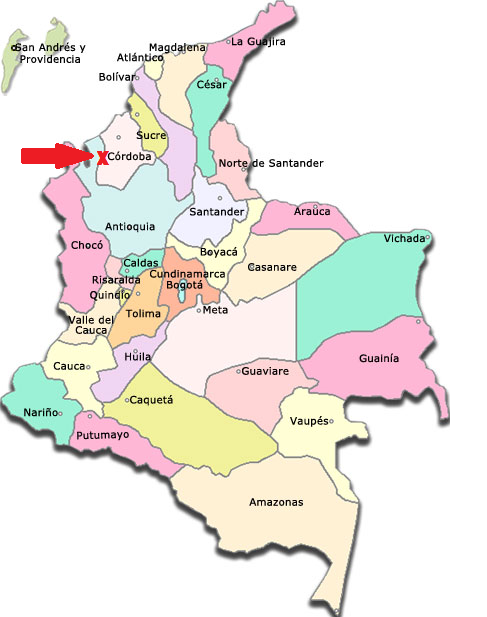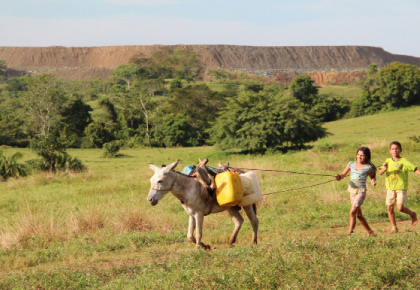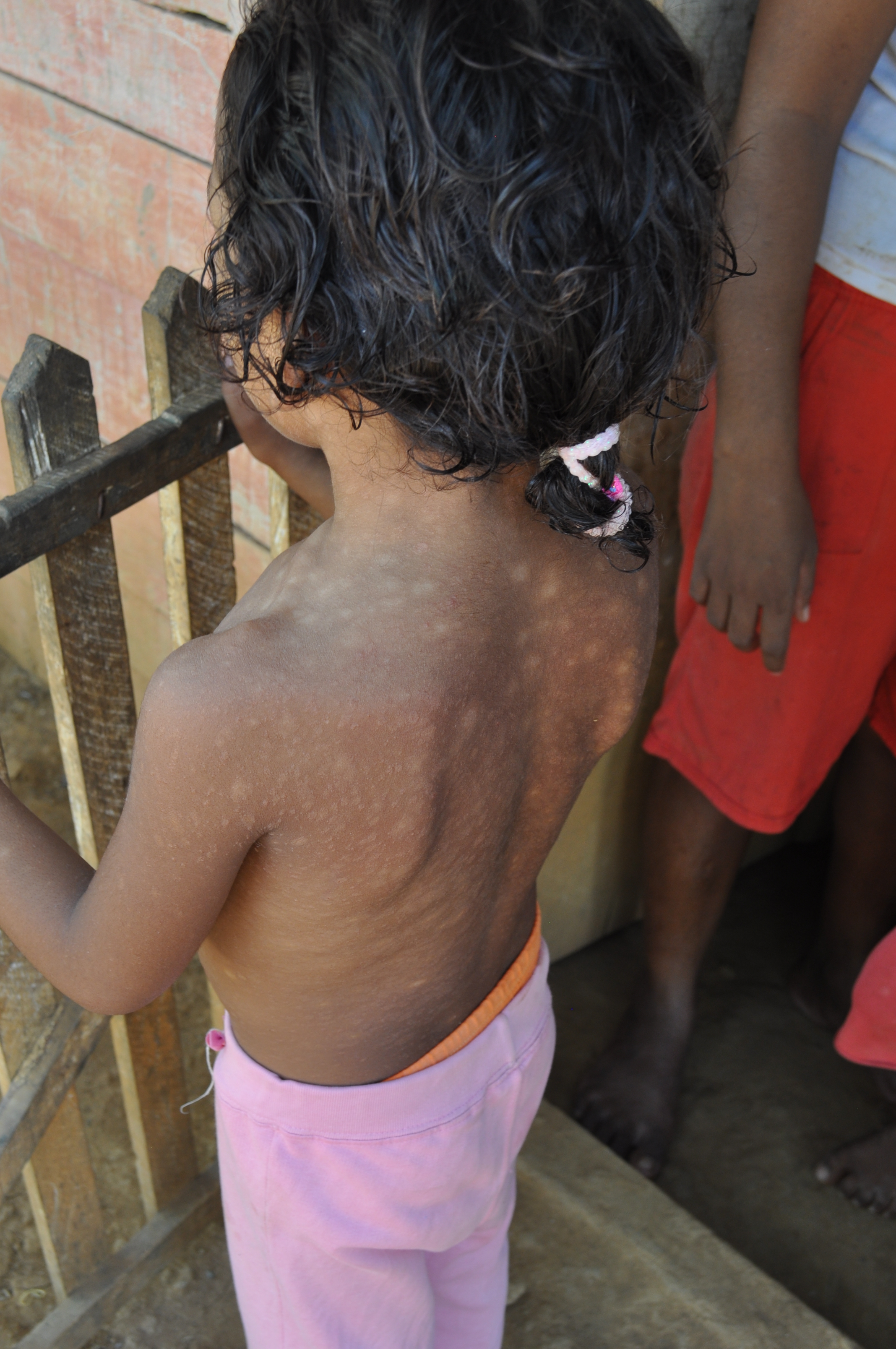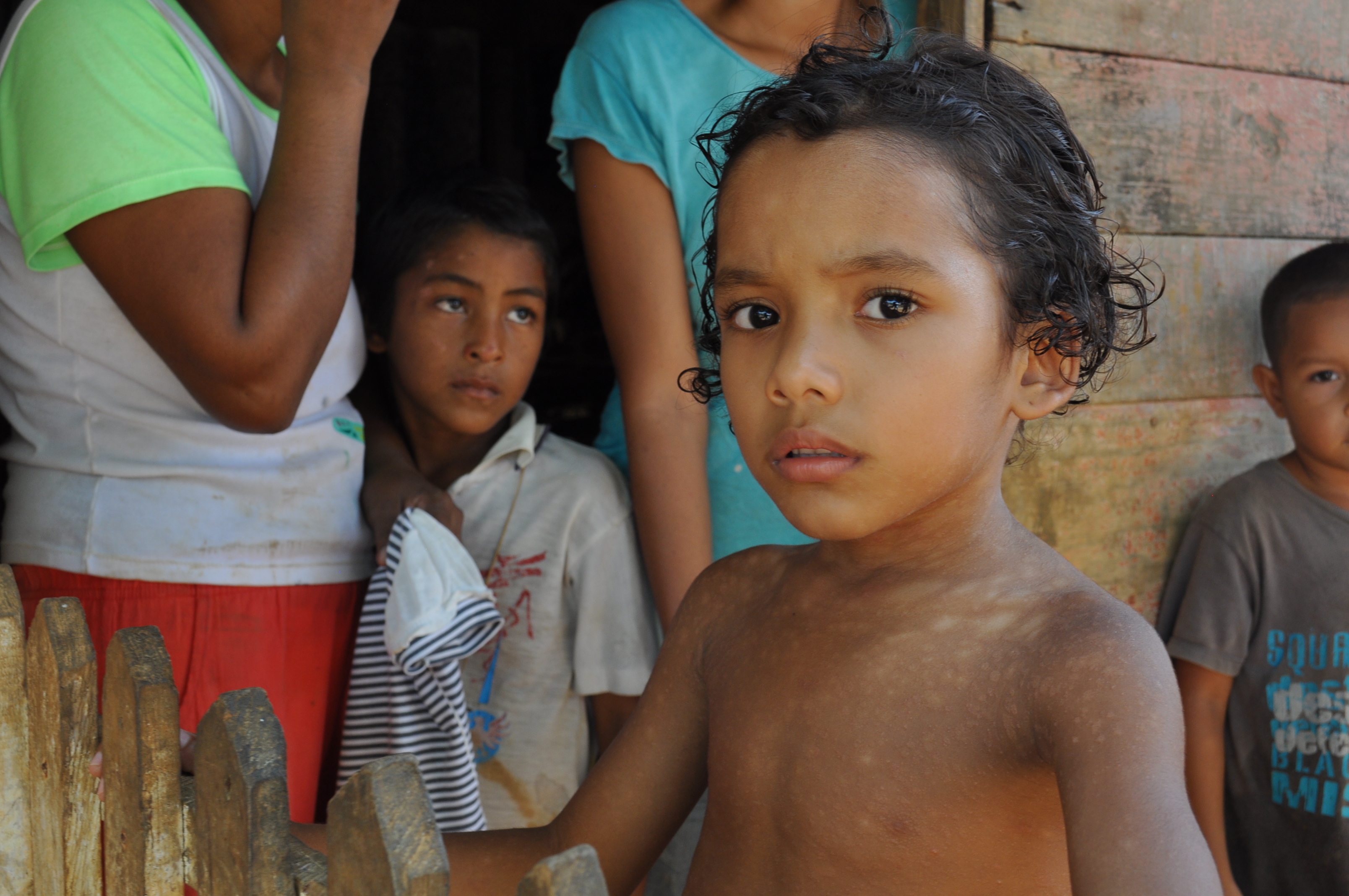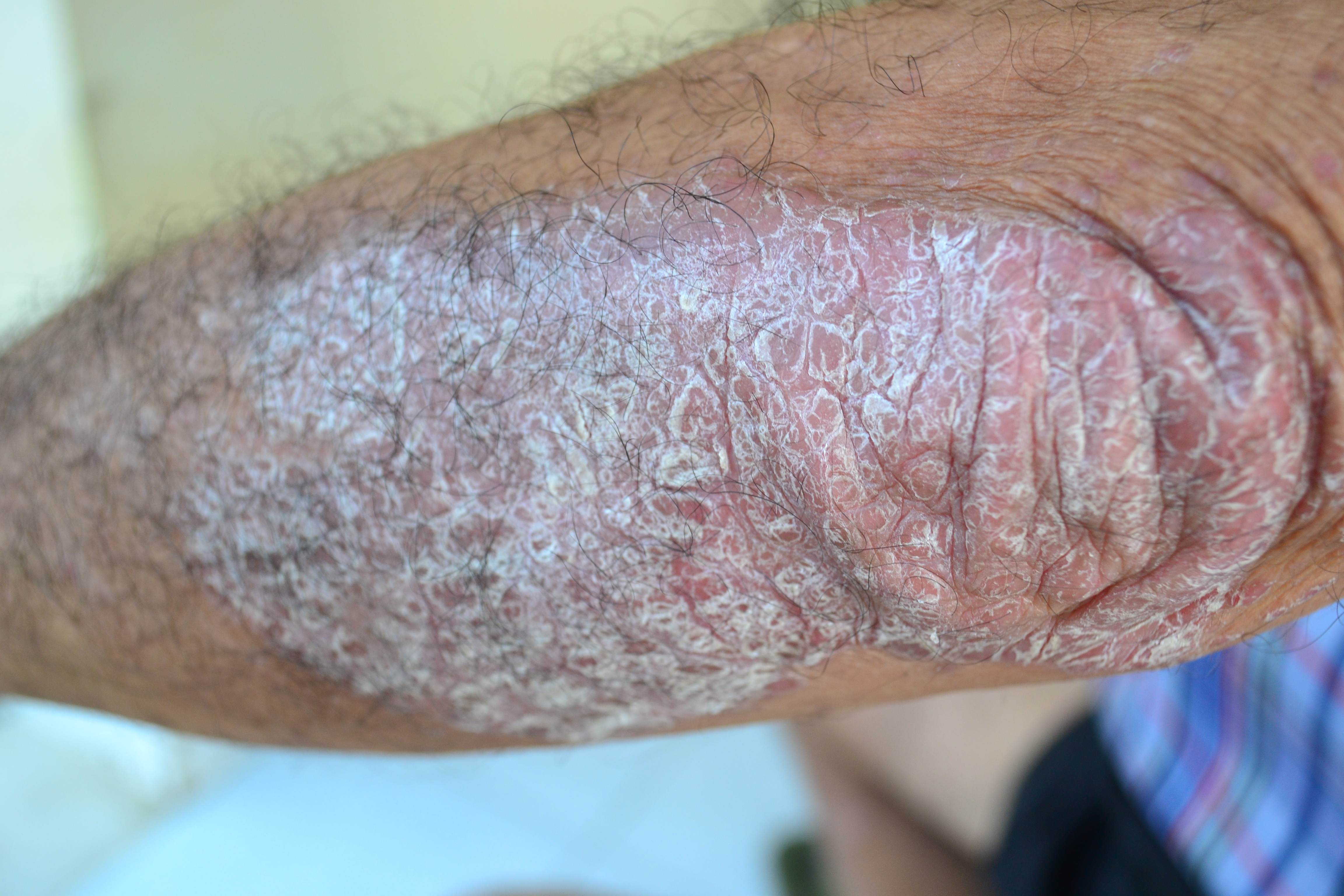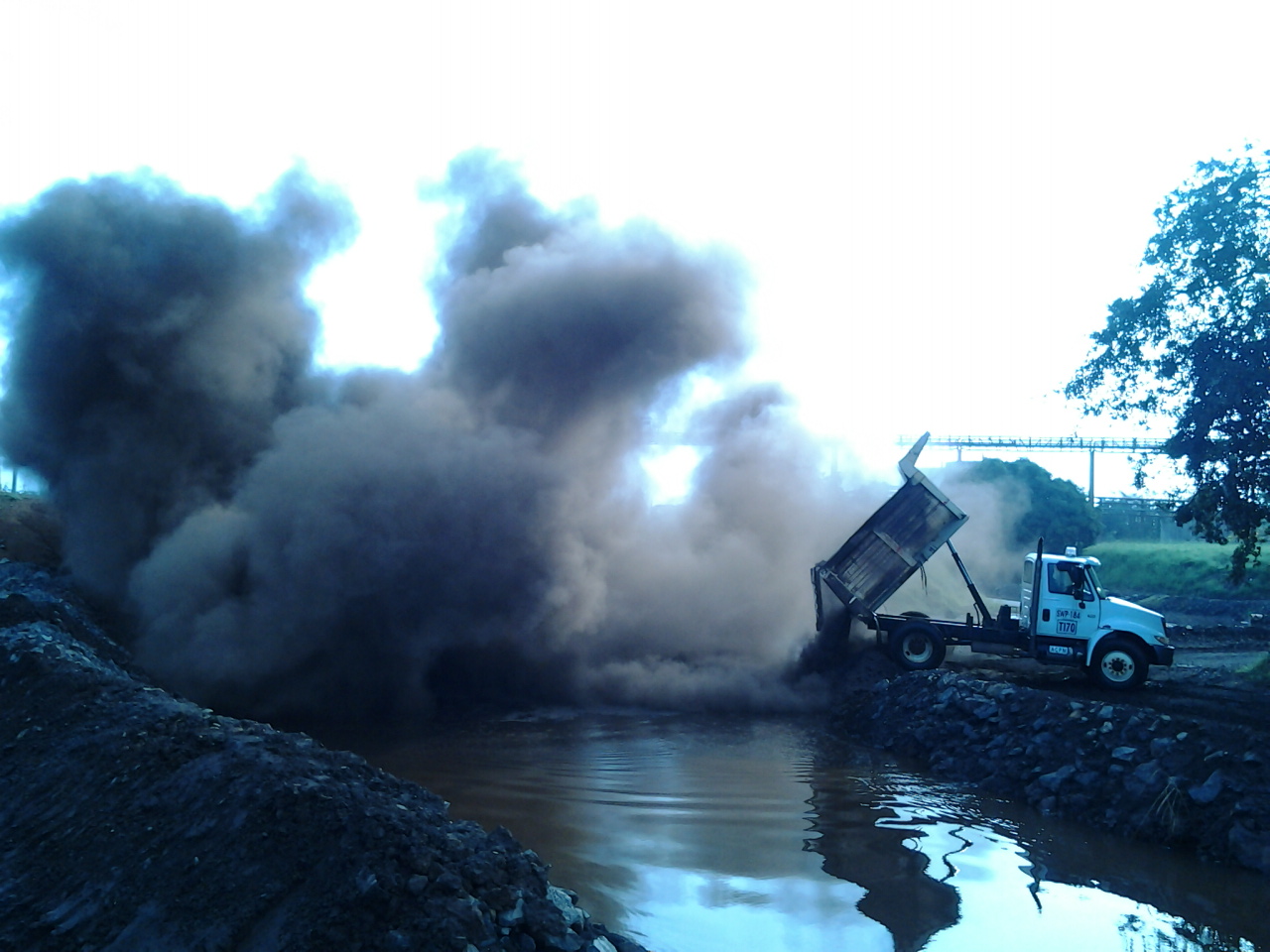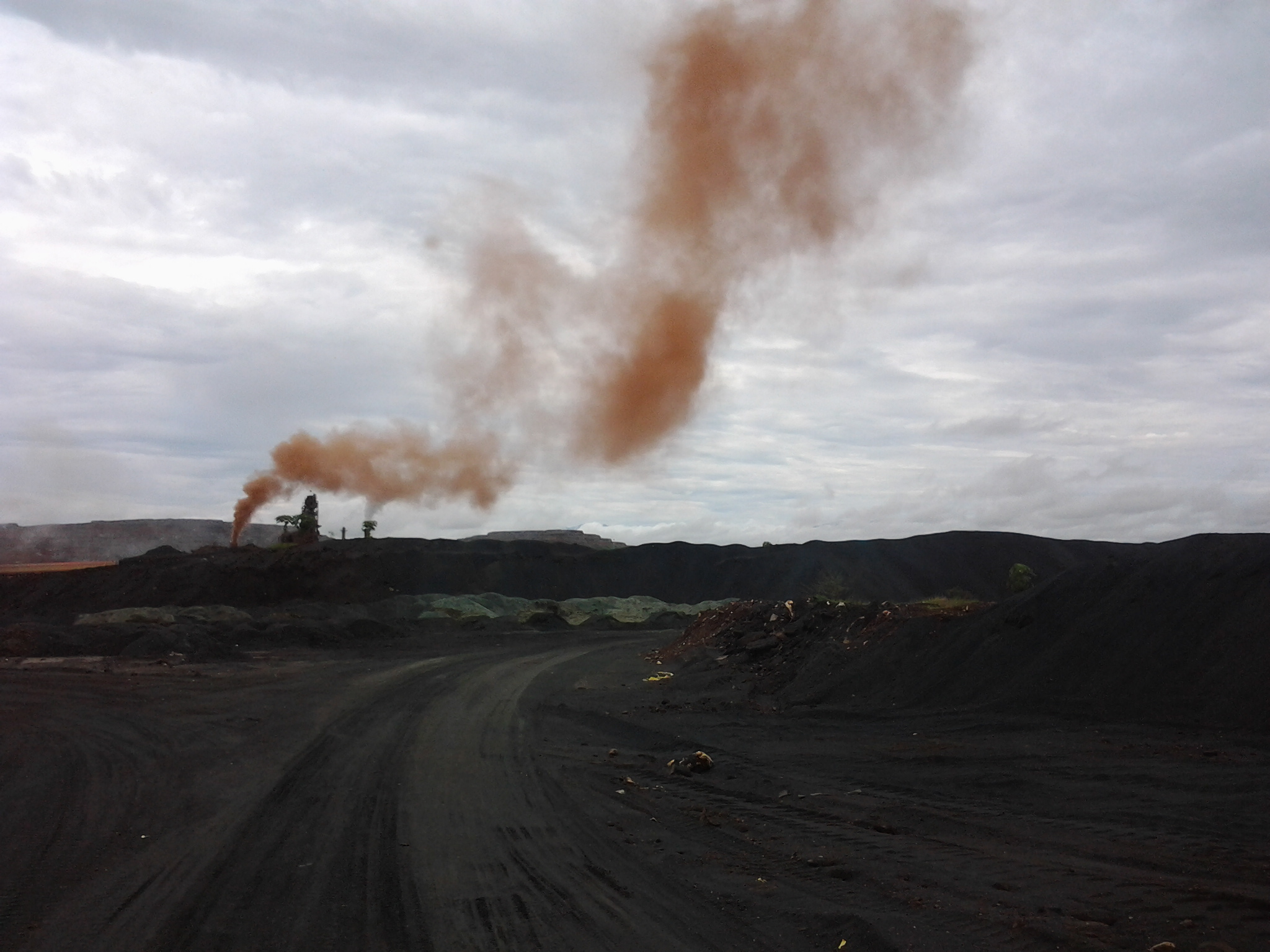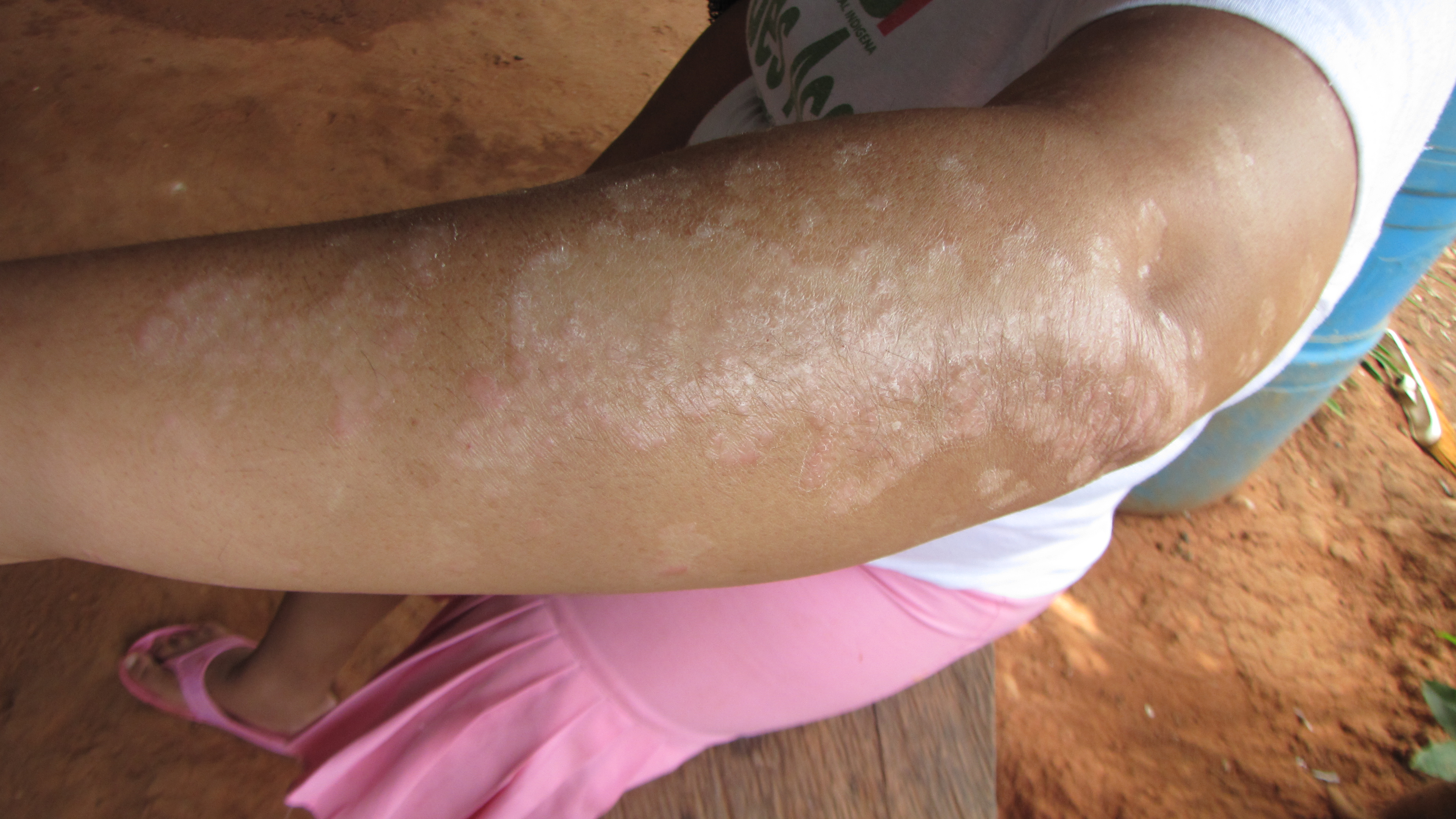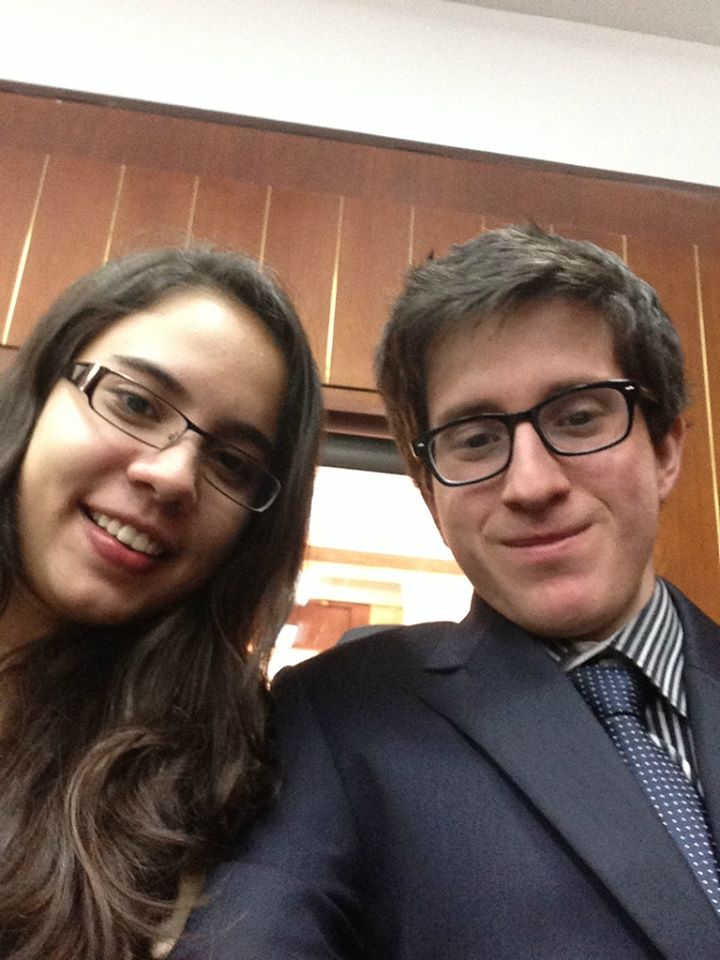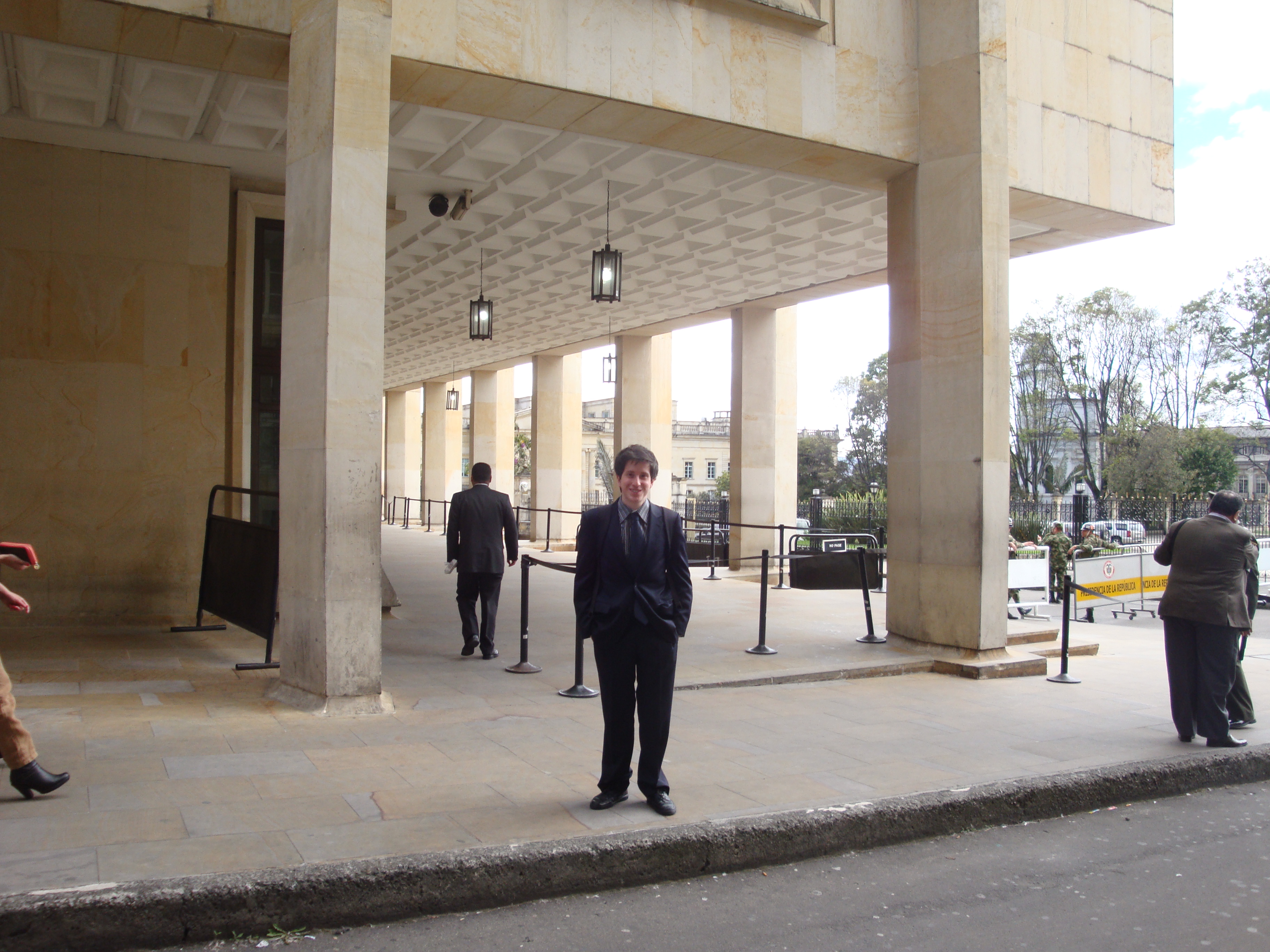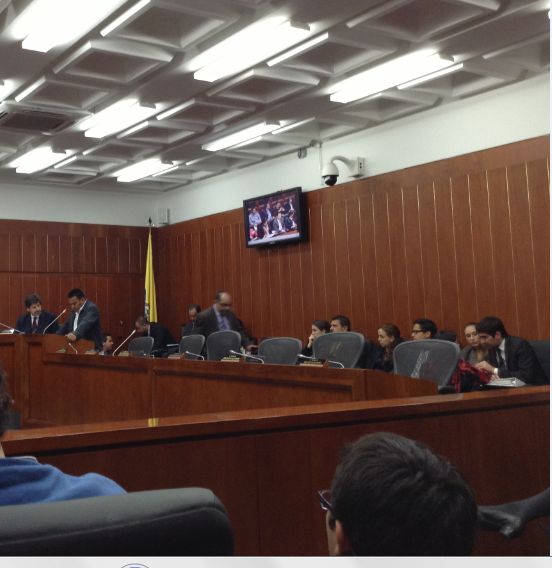Team:Colombia Uniandes/Social
From 2013.igem.org
Camilog137 (Talk | contribs) |
Camilog137 (Talk | contribs) (→It's time to work with people from Montelíbano!) |
||
| (12 intermediate revisions not shown) | |||
| Line 21: | Line 21: | ||
<p align="justify"> | <p align="justify"> | ||
| - | Nicko was inspired by an article that we read in SEMANA, a Colombian magazine. The article's tittle was "Cerro Matoso: Mina Rica, Pueblo Pobre". In this article a journalist was describing the social and enviromental situation around one of the biggest ferronickel mine in the world, CerroMatoso which is in Montelíbano, Colombia. Montelibano is a city of Córdoba department, it has 85,000 inhabitants, many of them are native that belong to the tribe "Zenú del Alto San Jorge". The natives are the most affected people because they live in Pueblo Flecha, Bocas de Uré, just next to mine. The journalist wrote that many of the old workers in the mine | + | Nicko was inspired by an article that we read in SEMANA, a Colombian magazine. The article's tittle was "Cerro Matoso: Mina Rica, Pueblo Pobre". In this article a journalist was describing the social and enviromental situation around one of the biggest ferronickel mine in the world, CerroMatoso which is in Montelíbano, Colombia. Montelibano is a city of Córdoba department, it has 85,000 inhabitants, many of them are native that belong to the tribe "Zenú del Alto San Jorge". The natives are the most affected people because they live in Pueblo Flecha, Bocas de Uré, just next to the mine. The journalist wrote that many of the old workers in the mine have cancer now and that most of kids have skin diseases. One of the picture that the journalist put in his article gave us the idea of Nicko, in the picture two kids are shown carrying water on a mule, the water had been picked up in a hydric source 800 meters from the mine and was intended for human consumption. Here we show the picture and the article to you: [http://www.semana.com/nacion/articulo/cerro-matoso-mina-rica-pueblo-pobre/262408-3| Cerro Matoso: Mina Rica, Pueblo Pobre] |
</p> | </p> | ||
[[File:Mapita.JPG|280px|thumb|left|Montelíbano (in Colombia) the X indicates the place]] | [[File:Mapita.JPG|280px|thumb|left|Montelíbano (in Colombia) the X indicates the place]] | ||
[[File:Kids&water.jpg|600px|thumb|center|Source:Semana.com]] | [[File:Kids&water.jpg|600px|thumb|center|Source:Semana.com]] | ||
| - | |||
| - | |||
| Line 35: | Line 33: | ||
<p align="justify"> | <p align="justify"> | ||
| - | In this section we aimed to know if people that live near to the mine would be willing to drink water that has been treated with Nicko, but first we tried to get closer to the | + | In this section we aimed to know if people that live near to the mine would be willing to drink water that has been treated with Nicko, but first we tried to get closer to the problem to be sure that Nicko would be a great solution. |
<br><br> | <br><br> | ||
| - | Our first movement was to write to the journalist in Semana because he knew perfectly the situation and he could help Colombia iGEM team to contact with people around mine. It was a hard work because magazine's policies don't allow reveal the name of authors of articles. We had to call hundreds times to people in SEMANA, with every people that we talked to, we explained what our purposes were and what iGEM is. Finally, we could contact to the journalist, his name is Tadeo Martinez. When we told our project to Tadeo, he was fascinated and inmediately he wanted to help us. He told us many of the things he knew about Cerro Matoso and its social and enviromental impact and gave us the cellphone number of José Javier de la Hoz, the lawyer of natives of the tribe Zenú del Alto San Jorge . Besides, Tadeo shared with us many of his photos of the mine, sick people and water bodies close to Cerro Matoso. | + | Our first movement was to write to the journalist in Semana because he knew perfectly the situation and he could help Colombia iGEM team to contact with people around the mine. It was a hard work because magazine's policies don't allow him to reveal the name of authors of articles. We had to call hundreds times to people in SEMANA, with every people that we talked to, we explained what our purposes were and what iGEM is. Finally, we could contact to the journalist, his name is Tadeo Martinez. When we told our project to Tadeo, he was fascinated and inmediately he wanted to help us. He told us many of the things he knew about Cerro Matoso and its social and enviromental impact and gave us the cellphone number of José Javier de la Hoz, the lawyer of natives of the tribe Zenú del Alto San Jorge . Besides, Tadeo shared with us many of his photos of the mine, sick people and water bodies close to Cerro Matoso. You can see them below. |
| Line 77: | Line 75: | ||
<p align="justify"> | <p align="justify"> | ||
| - | After we listened to Tadeo, we felt a social responsability with our country and we wanted to use our knowledge to create an alternative solution to our problem and why not, a solution for every country that exploits nickel in the world. | + | After we listened to Tadeo, we felt a social responsability with our country and we wanted to use our knowledge to create an alternative solution to our problem and why not, a solution for every country that exploits nickel in the world. Despite of we know that even if we achieved to get Nicko in the lab, apply him in colombian waters it's something almost imposible, we're sure that promoting this kind of initiatives is an important task because common people have to begin to see science as a valuable tool to improve the society's life quality. |
<br><br> | <br><br> | ||
| - | It's time to work with people from Montelíbano! We called to José Javier, lawyer of natives, and told him we'll be glad of meet him to talk about our projects, iGEM and of course about nickel contaminated water. He says:"Oh! you are so lucky, next week I'll be in Bogotá, in a debate about Cerro Matoso in the Congress of the Republic, why don't you go? José Javier had not finished the sentence when we were saying YEEEEES!!! | + | </p> |
| + | ==It's time to work with people from Montelíbano!== | ||
| + | <p align="justify"> | ||
| + | We called to José Javier, lawyer of natives, and told him we'll be glad of meet him to talk about our projects, iGEM and of course about nickel contaminated water. He says:"Oh! you are so lucky, next week I'll be in Bogotá, in a debate about Cerro Matoso in the Congress of the Republic, why don't you go? José Javier had not finished the sentence when we were saying YEEEEES!!! | ||
<br><br> | <br><br> | ||
| - | On tuesday, august 20, iGEM was in the Congress of the Republic for first time, we were excited | + | On tuesday, august 20, iGEM was in the Congress of the Republic for the first time, we were excited, but also, nervous because we were participating in a debate in the maximun legislative body of our country. There, we meet to Jose Javier, and he was with Israel Aguilar, the indian chief :D. It was our opportunity to talk to the native chief about Nicko and asked him if they would be willing to drink water where Nicko had been cleaning. For our happiness, Israel says his community would drink Nicko treated water. Israel invited us to his community and he offered us his help. Due to the fact we are on class semester, we didn't have the opportunity to go to Montelíbano, but we are planning a trip on one of the next weekends. Here one photo of two of us in the Congress. |
</p> | </p> | ||
| Line 93: | Line 94: | ||
<p align="justify"> | <p align="justify"> | ||
| - | Frequently we chat with Jose Javier and he | + | Frequently we chat with Jose Javier and he tells us how the natives are. Recently, he gave us water samples that Israel send to iGEM Colombia. We intend to determine metals in these samples. The samples that Israel sent us are valuable for us because nobody can enter in natives' territory to get samples and we want to test Nicko's performance in these water. In addition, we will analyze these samples in the next weeks using Atomic Absorption Spectroscopy with flame to determine the heavy metal's concentration in water from Cerro Matoso. The samples correspond to water before and after the river crosses the mine, and we'll realyze analysis for Nickel, Iron, Cobalt, Manganese among others. |
<br><br> | <br><br> | ||
| - | We asked for a interview to Jose Javier and Israel and they said: "of course", but because of we don't live in the same city that they, a physical interview had not been possible. However, we interviewed Israel via telephone, so you can see the | + | We asked for a interview to Jose Javier and Israel and they said: "of course", but because of we don't live in the same city that they do, a physical interview had not been possible. However, we interviewed Israel via telephone, so you can see the video below (with English subtitles). |
| - | + | ||
| - | + | ||
</p> | </p> | ||
| + | <p align="justify"> | ||
| + | *''Interviewing Israel'': He basically told us about how nickel causes damages in the health of his community and, what is a good news for us, he told us that his community, specially the new generations, are ready to try new alternatives as bacteria to help in the remediation of environment. The most interesting part of the conversation is when chief Israel asks to iGEM Colombia Team to go to his community and explain native people what a bacteria is and how synthetic biology can be applied :) | ||
| + | </p> | ||
| + | <br><br> | ||
<html> | <html> | ||
<tr> | <tr> | ||
| - | <iframe width="560" height="315" src="//www.youtube.com/embed/ | + | <iframe width="560" height="315" src="//www.youtube.com/embed/xyM35c8hyTs" frameborder="0" allowfullscreen></iframe> |
</tr> | </tr> | ||
</html> | </html> | ||
| Line 115: | Line 118: | ||
<body> | <body> | ||
<p> | <p> | ||
| - | <a class="btn btn- | + | <a class="btn btn-info btn-large" href="https://2013.igem.org/Team:Colombia_Uniandes/Educative"> |
Educative! | Educative! | ||
</a> | </a> | ||
| - | <a class="btn btn- | + | <a class="btn btn-info btn-large" href="https://2013.igem.org/Team:Colombia_Uniandes/Corporative"> |
Corporative! | Corporative! | ||
</a> | </a> | ||
Latest revision as of 16:29, 27 September 2013
Human Practices
Social axis
Nicko was inspired by an article that we read in SEMANA, a Colombian magazine. The article's tittle was "Cerro Matoso: Mina Rica, Pueblo Pobre". In this article a journalist was describing the social and enviromental situation around one of the biggest ferronickel mine in the world, CerroMatoso which is in Montelíbano, Colombia. Montelibano is a city of Córdoba department, it has 85,000 inhabitants, many of them are native that belong to the tribe "Zenú del Alto San Jorge". The natives are the most affected people because they live in Pueblo Flecha, Bocas de Uré, just next to the mine. The journalist wrote that many of the old workers in the mine have cancer now and that most of kids have skin diseases. One of the picture that the journalist put in his article gave us the idea of Nicko, in the picture two kids are shown carrying water on a mule, the water had been picked up in a hydric source 800 meters from the mine and was intended for human consumption. Here we show the picture and the article to you: [http://www.semana.com/nacion/articulo/cerro-matoso-mina-rica-pueblo-pobre/262408-3| Cerro Matoso: Mina Rica, Pueblo Pobre]
In this section we aimed to know if people that live near to the mine would be willing to drink water that has been treated with Nicko, but first we tried to get closer to the problem to be sure that Nicko would be a great solution.
Our first movement was to write to the journalist in Semana because he knew perfectly the situation and he could help Colombia iGEM team to contact with people around the mine. It was a hard work because magazine's policies don't allow him to reveal the name of authors of articles. We had to call hundreds times to people in SEMANA, with every people that we talked to, we explained what our purposes were and what iGEM is. Finally, we could contact to the journalist, his name is Tadeo Martinez. When we told our project to Tadeo, he was fascinated and inmediately he wanted to help us. He told us many of the things he knew about Cerro Matoso and its social and enviromental impact and gave us the cellphone number of José Javier de la Hoz, the lawyer of natives of the tribe Zenú del Alto San Jorge . Besides, Tadeo shared with us many of his photos of the mine, sick people and water bodies close to Cerro Matoso. You can see them below.
The converstion with Tadeo was exhaustive, he explained us all the process of nickel's extraction and how are the workers and people whom live around the mine affected by pollution. As we mentioned above, he gave us sad stories about people with terrible diseases, like workers whose health was destroyed and the doctors found them with high level of heavy metals in their blood. The current situation in Cerro Matoso is really hard and complex, there are legal an ethic problems involved.
After we listened to Tadeo, we felt a social responsability with our country and we wanted to use our knowledge to create an alternative solution to our problem and why not, a solution for every country that exploits nickel in the world. Despite of we know that even if we achieved to get Nicko in the lab, apply him in colombian waters it's something almost imposible, we're sure that promoting this kind of initiatives is an important task because common people have to begin to see science as a valuable tool to improve the society's life quality.
It's time to work with people from Montelíbano!
We called to José Javier, lawyer of natives, and told him we'll be glad of meet him to talk about our projects, iGEM and of course about nickel contaminated water. He says:"Oh! you are so lucky, next week I'll be in Bogotá, in a debate about Cerro Matoso in the Congress of the Republic, why don't you go? José Javier had not finished the sentence when we were saying YEEEEES!!!
On tuesday, august 20, iGEM was in the Congress of the Republic for the first time, we were excited, but also, nervous because we were participating in a debate in the maximun legislative body of our country. There, we meet to Jose Javier, and he was with Israel Aguilar, the indian chief :D. It was our opportunity to talk to the native chief about Nicko and asked him if they would be willing to drink water where Nicko had been cleaning. For our happiness, Israel says his community would drink Nicko treated water. Israel invited us to his community and he offered us his help. Due to the fact we are on class semester, we didn't have the opportunity to go to Montelíbano, but we are planning a trip on one of the next weekends. Here one photo of two of us in the Congress.
Frequently we chat with Jose Javier and he tells us how the natives are. Recently, he gave us water samples that Israel send to iGEM Colombia. We intend to determine metals in these samples. The samples that Israel sent us are valuable for us because nobody can enter in natives' territory to get samples and we want to test Nicko's performance in these water. In addition, we will analyze these samples in the next weeks using Atomic Absorption Spectroscopy with flame to determine the heavy metal's concentration in water from Cerro Matoso. The samples correspond to water before and after the river crosses the mine, and we'll realyze analysis for Nickel, Iron, Cobalt, Manganese among others.
We asked for a interview to Jose Javier and Israel and they said: "of course", but because of we don't live in the same city that they do, a physical interview had not been possible. However, we interviewed Israel via telephone, so you can see the video below (with English subtitles).
- Interviewing Israel: He basically told us about how nickel causes damages in the health of his community and, what is a good news for us, he told us that his community, specially the new generations, are ready to try new alternatives as bacteria to help in the remediation of environment. The most interesting part of the conversation is when chief Israel asks to iGEM Colombia Team to go to his community and explain native people what a bacteria is and how synthetic biology can be applied :)
More activities on the other two axes:
 "
"





